S54B32 - Втори живот на двигателя на М3 Е46: възстановяване

„Check engine“ светна на таблото
След смяната на дебитомера колата осезаемо живна, но имаше проблеми в ниските обороти и често гаснеше при спиране. Новият дебитомер показваше поток на въздух от 18 кг/ч на празен ход без товар, докато старият даваше 26 кг/ч. Поради липса на референтни данни започнахме да се допитваме до хора с опит в занаята колко би трябвало да мери читав дебитомер. С проба на доказано работещ сензор и консултации в популярни интернет форуми повечето данни сочеха, че нормалната стойност е около това, което мери новият. Това обясняваше силната миризма на бензин от ауспусите и явно двигателят е работил на супер богата смес и буквално се е давил. След изтриване на адаптациите на мотора работата му на празен ход се стабилизира и като, че ли нещата се наредиха. Случайно или не, още в същия ден, „Check engine“ лампата светна отново и двигателят заработи необичайно – слаб в ниските, шумен и с нехарактерни вибрации, а разходът на гориво отиде направо в Космоса…
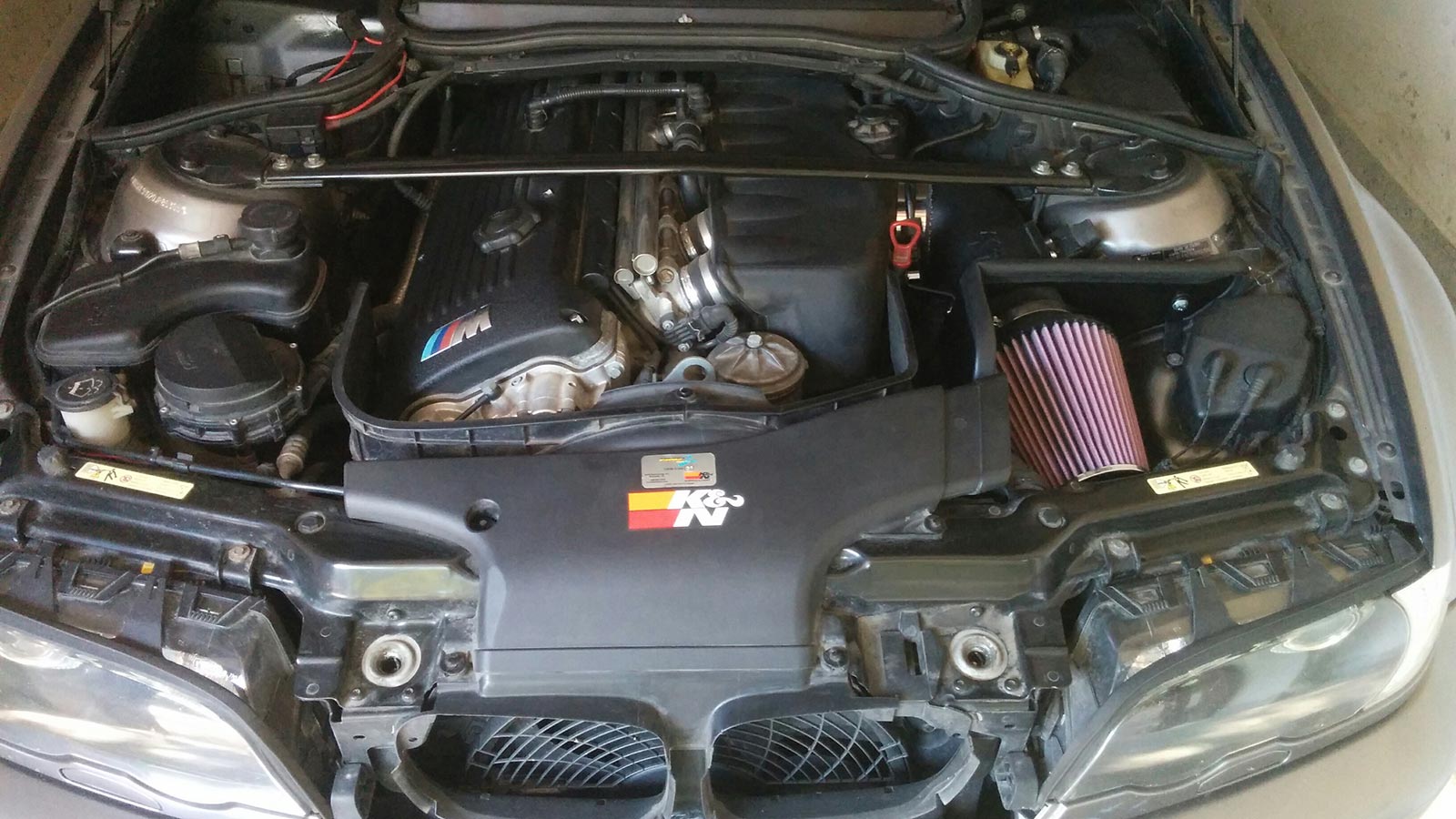
Двигателят хвърляше грешка за разсинхронизация между колянов вал и разпределителен вал на всмукателните клапани. Понякога имаше проблеми с паленето – стартерът въртеше, но нямаше запалване. Все симптоми сочещи, че е заминал датчикът на коляновия вал. Имайки предвид, че VANOS-ите бяха наред, свещи и бобини също, дебитомерът е нов, то въпросните датчици за положението на двата разпределителни вала, както и предните ламбда сонди бяха единственото нещо, което може да влияе на работата на мотора и не бяха сменяни. Въпросните части се поръчаха оригинални, като освен смяната им, поисках да се измери компресията на всички цилиндри. Последното, което би могло да е реален проблем за даваната ниска мощност. Все пак, вече можеше да се направи следният много важен извод – следете реалните показания на дебитомера! С нарастването на пробега той започва да увеличава измерения дебит на въздуха, което води до погрешно обогатяване на сместта. Качи ли над 20 кг/ч или пробегът мине над 100 000 км, сменяйте го заедно с предните ламбда сонди. S54 работи с тясно-лентови сонди и след въпросния пробег показанията им стават много инертни.
Проба-грешка
Въпросните сензори бяха сменени, двигателят не записваше вече никакви грешки. Работеше много плавно и нетърпимата миризма на бензин зад колата изчезна напълно. Но… както казват хората, много хубаво не е на хубаво! Измерването на компресията показа плашещо ниски стойности на цилиндри от 2 до 5. Най-ниска беше на 2-ри – около 6.5, докато на 6-ти беше на номинала от 11.5. Това говореше само за едно – гарнитурата на главата беше заминала. Това е друг много опасен и доста характерен проблем при S54 (особено в Европа, вероятно заради стандартите на горивата). Този проблем може да няма никакви проявления освен реално по-ниска мощност, но да доведе до катастрофални последствия за чугунения блок на двигателя. Стената на блока между цилиндрите е много тънка – нещо от порядъка на 2-3 мм. Съответно там са най-големите температурни напрежения и металната гарнитура между блока и главата първо се пропуква. След това, с течение на времето, прогаря напълно, което води до загуба на херметичност между съседните цилиндри. Освен неправилна реално изгаряща гориво-въздушна смес, това води до температурна корозия най-вече на блока.
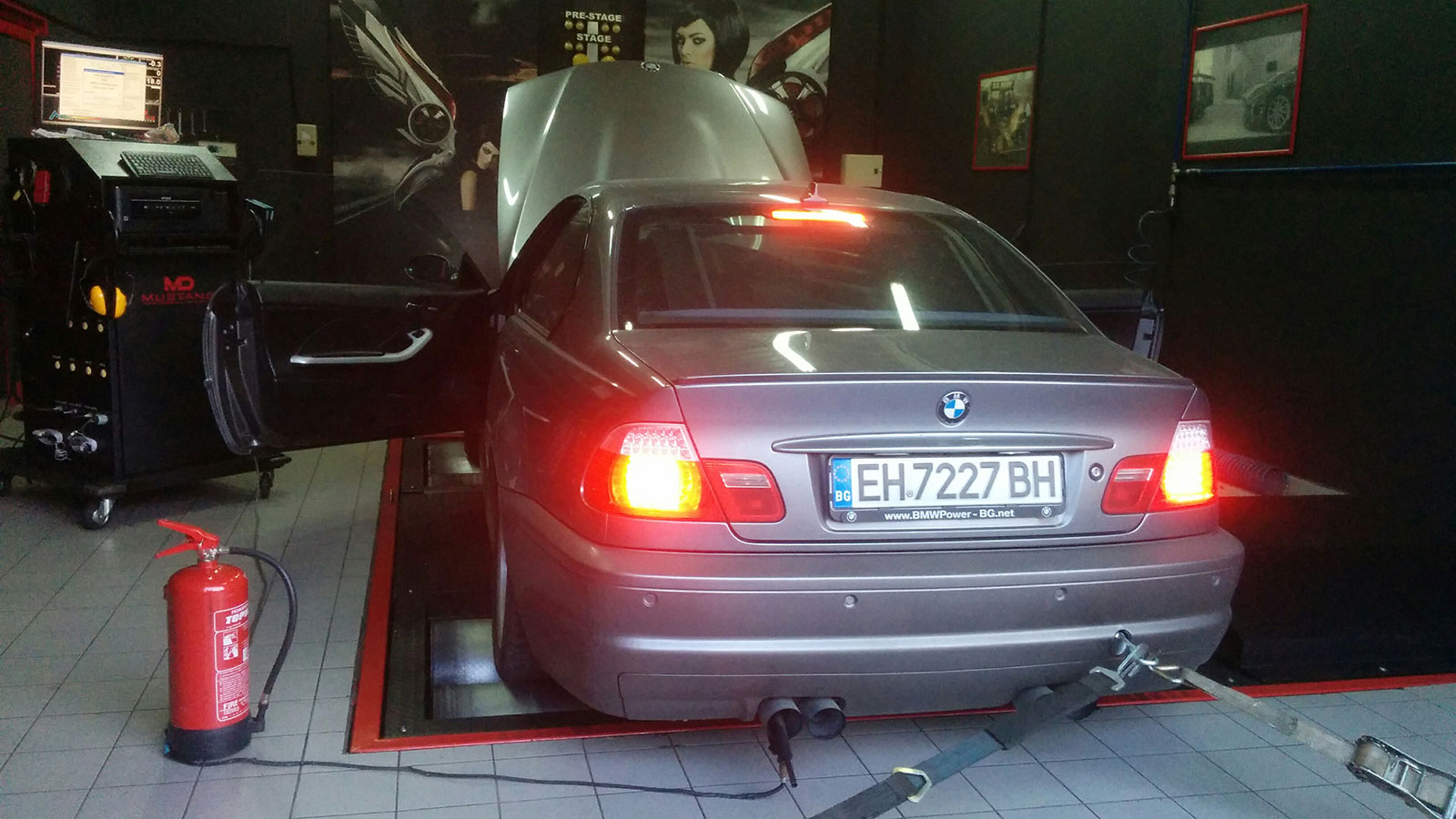
Челото на блока има допуск за шлайфане, но при неговото надвишаване блокът е „пътник“. Счита се, че новата гарнитура няма да може да уплътни интерфейса между блока и главата, ако има язви в една от двете контактуващи повърхности. Така, че бързо трябваше да се вземе решение. Да продължа да карам колата беше чиста проба руска рулетка. Ремонтът се очертаваше да стигне висока четири цифрена сума. Имайки предвид, че не възнамерявах да се разделям с Е46-цата, реших да я спра от движение и двигателят да премине през основен ремонт…

На операционна маса
Още на втория ден, след като стартира ремонтът, след демонтаж на предния мост двигателят беше свален от отсека надолу и разглобен до етап глава-блок. Както се и очакваше гарнитурата между двете беше изцяло сцепена точно по средата, където стената на блока е най-тънка. Добрата новина все пак беше, че нямаше никакви видими повреди по челото на блока. Все пак е задължително да се изпрати на шлайфане, за да се подготви за инсталацията на новата гарнитура, тъй като повърхностите трябва да са изключително гладки. Решихме, също така, да се сменят основни и биелни лагери на коляновия вал, бутални сегменти, ангренажна верига и всичко друго, което се прецени, че е дефектно. Втората добра новина беше, че освен 6 броя износени кобилици на клапани и един износен пластмасов водач на веригата на маслената помпа, всичко друго беше в добро състояние.
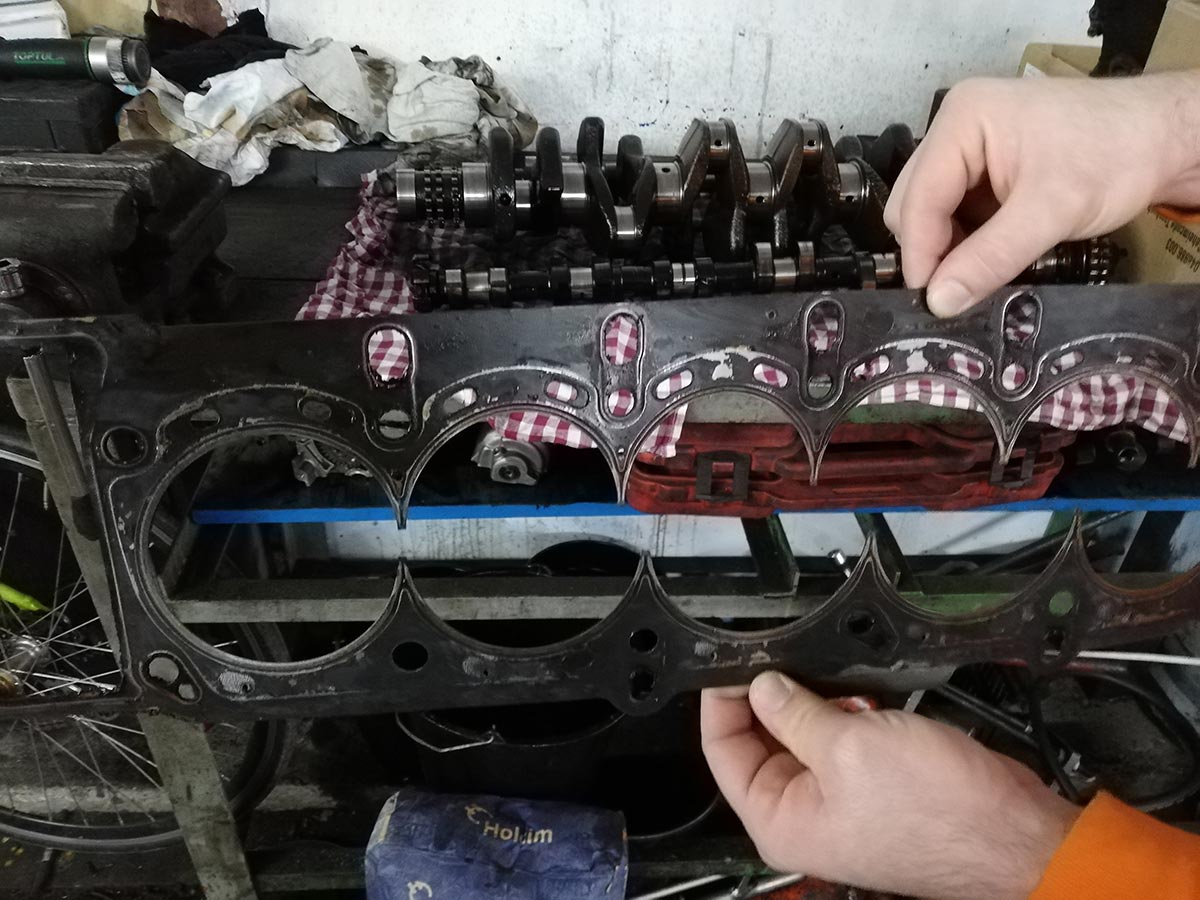
Имайки предвид, че двигателят беше почти на 300 000 км и това беше първото му отваряне, това беше повече от добра новина! Важно беше да се види и състоянието на биелните лагери, имайки предвид, че ги сменяхме превантивно преди точно 80 000 км. Бяха съвсем адекватно износени, което също беше повод за оптимизъм! И разбира се доказателство, че честата смяна на масло и редовното каране са гаранция, че в двигателя няма да тръгнат нежелани процеси.
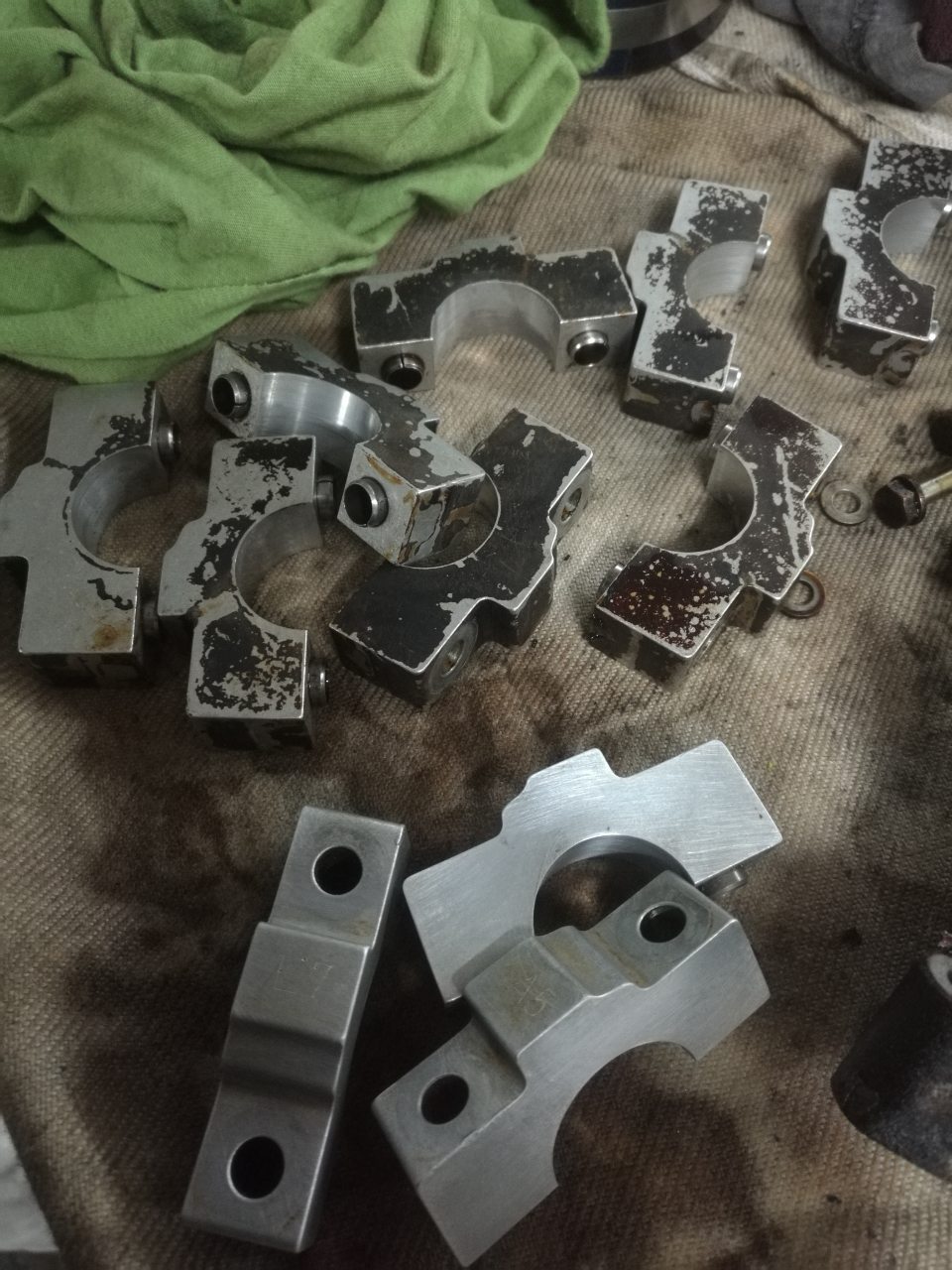
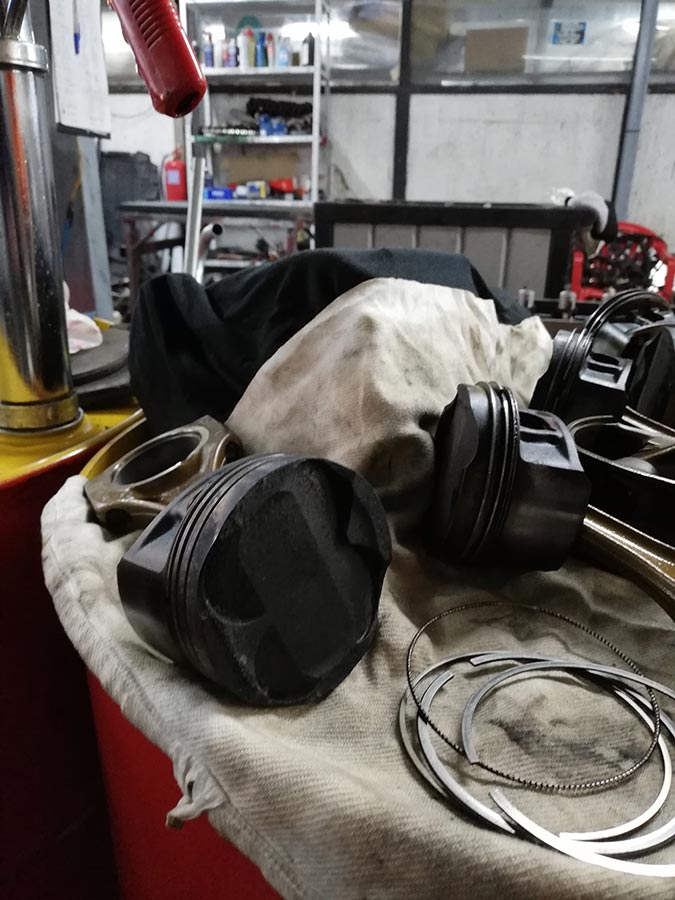
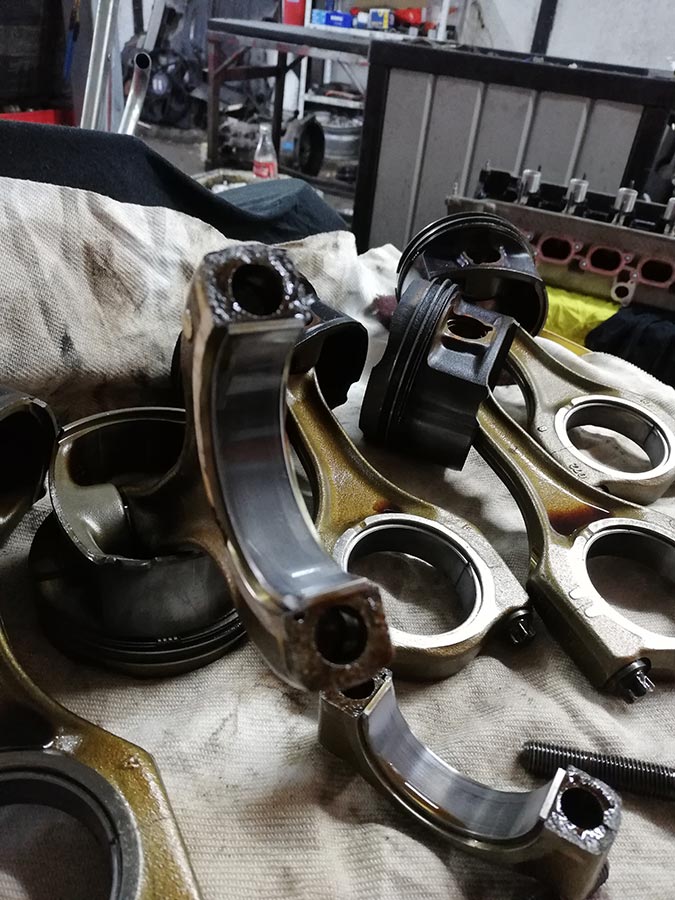
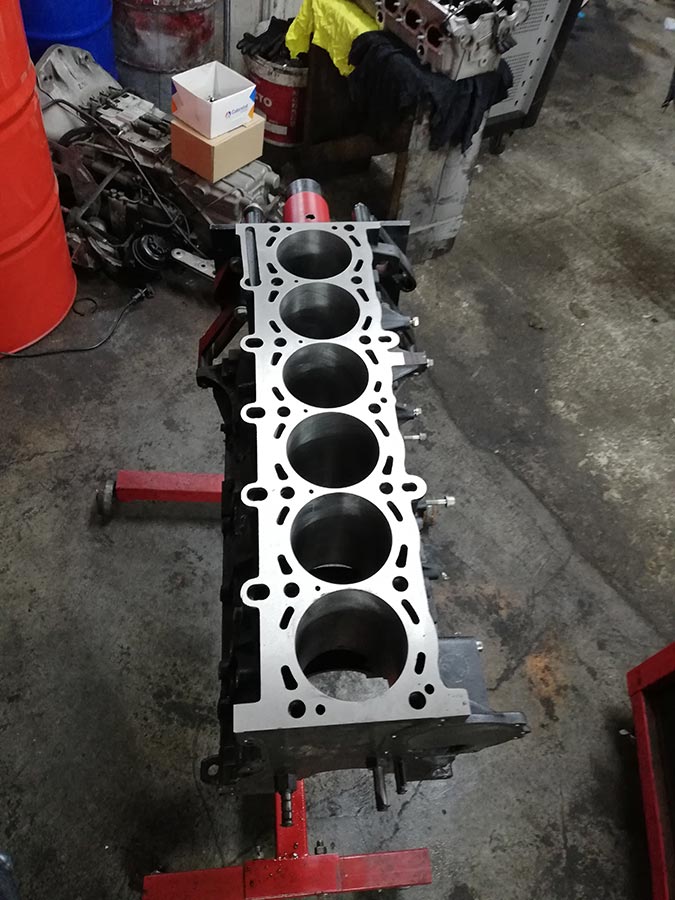
Голяма част от работата след разглобяването на мотора се състоеше в почистването на нагар от старите части – сега беше най-подходящият момент това да се случи. Главата също беше изпратена за шлайфане преди инсталация, както и напасване на клапаните. Останалата част от работата беше повече или по-малко рутинна и лека-полека двигателят беше събран с новите лагери, сегменти, ангренажна верига и какви ли не гарнитури и уплътнения. Предстоеше разработване на новите сегменти, което означава плавно загряване на двигателя и непревишаване на 3000-4000 об/мин.

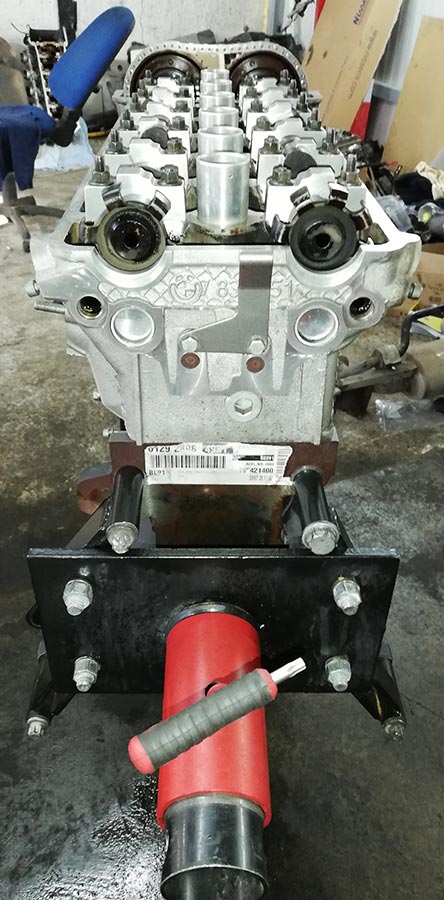

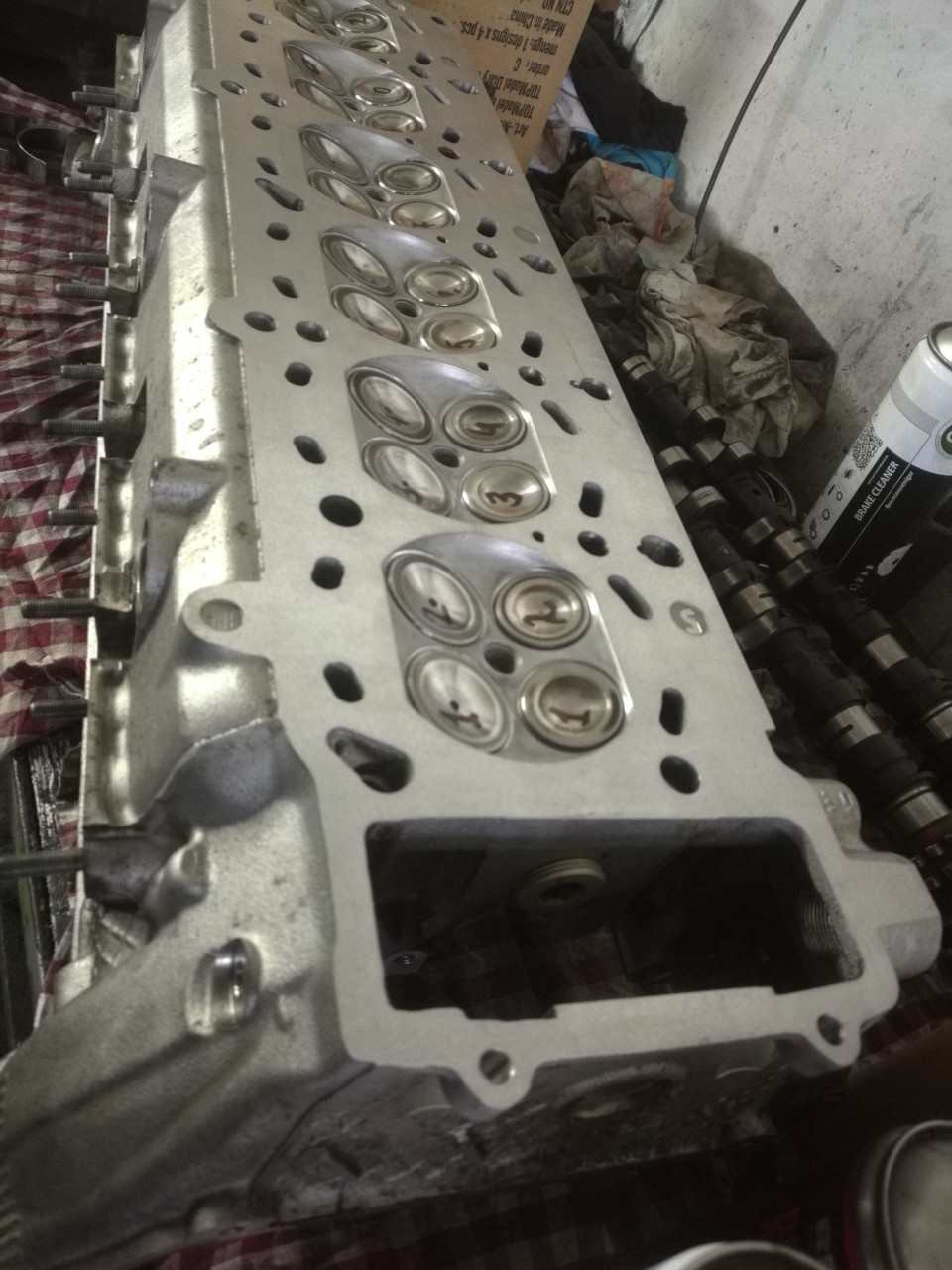
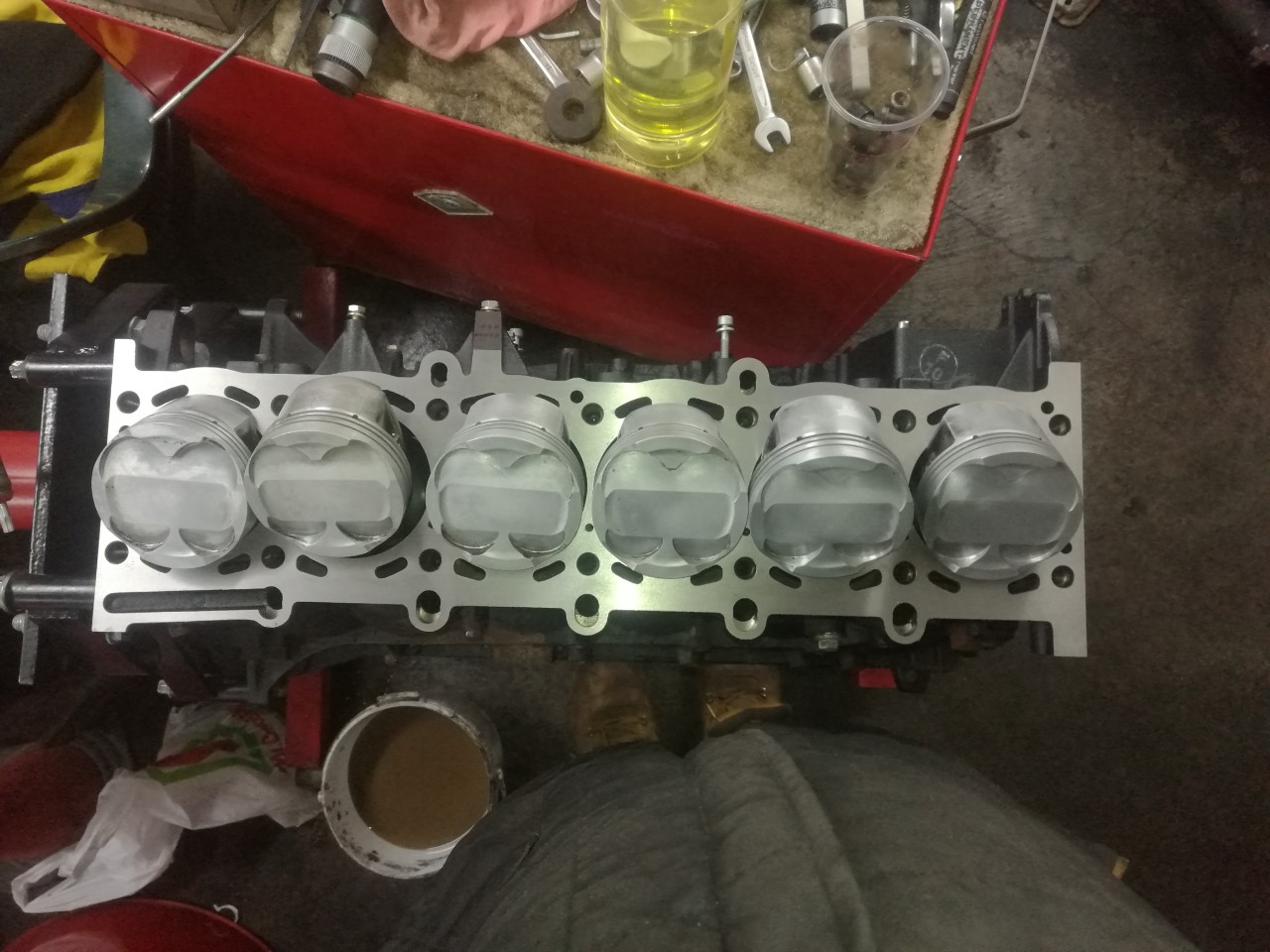
Крайният резултат
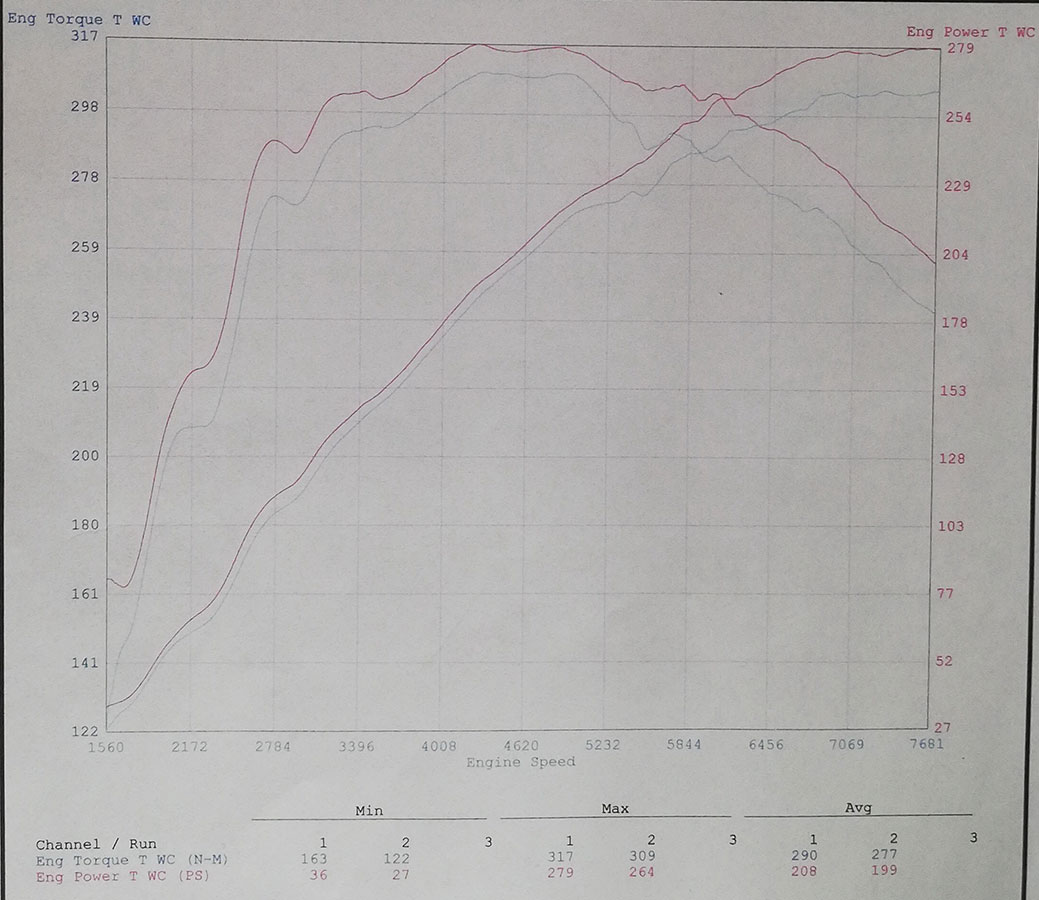
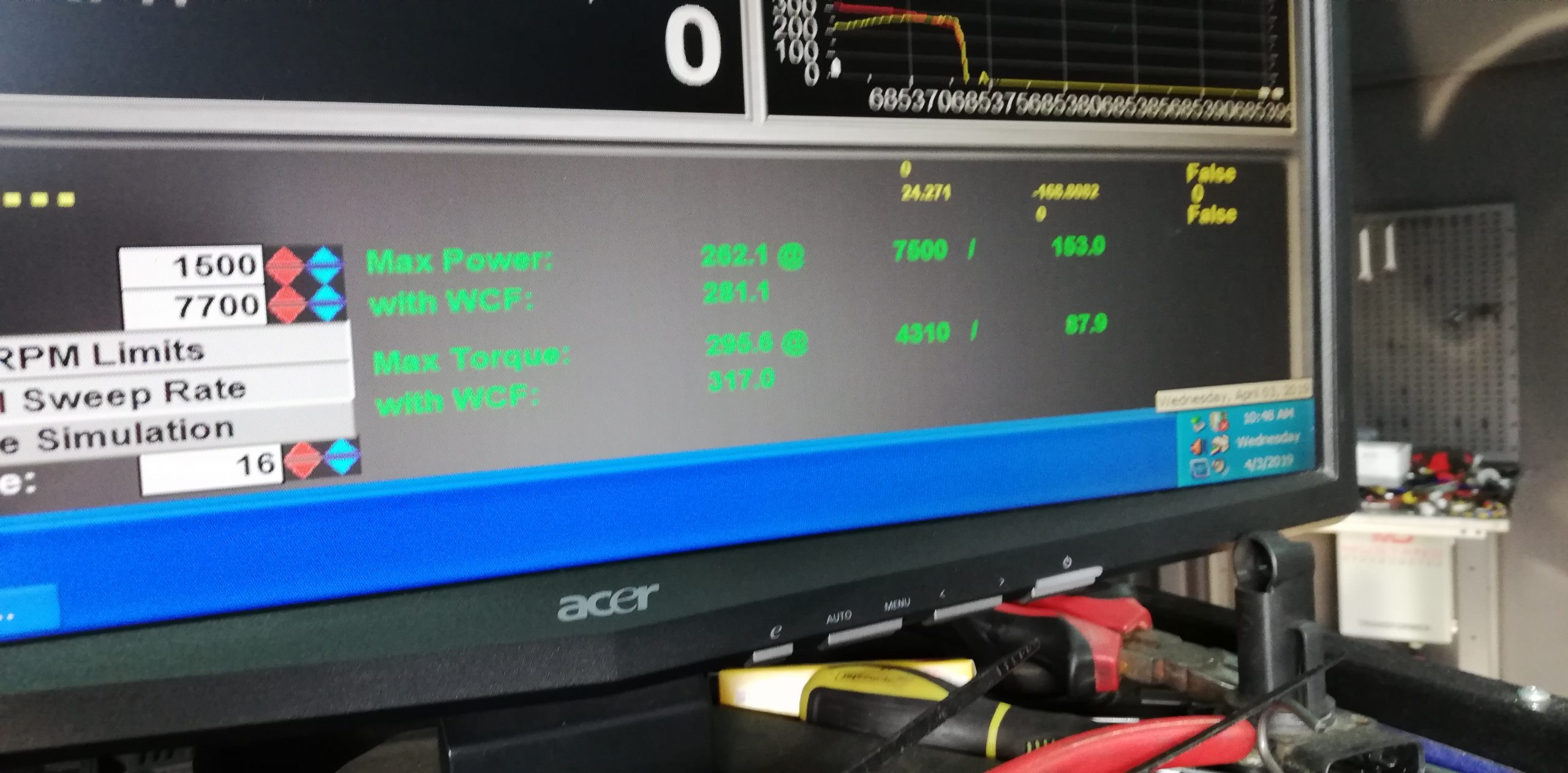
Още на първото палене след като си взех колата ми подсказа, че в моето М3 тупти ново сърце! Моторът пали буквално от 1/8 оборот, работи изключително равномерно, разходът на гориво дори се понижи. След необходимото разработване за около 2 000 км дойде време да се довърши това, което започна от неуспешният ремап. След само 3-4 мапа колата даде 280 к.с. 320 Нм на колелата (Мустанг дино) при 35 ‘C във входящия колектор. Цели 60 к.с. на колела отгоре спрямо това, което беше есента! Наистина през сериозен ремонт премина моят S54, но начинът, по който върви колата от тогава ми дава пълна увереност, че сърцето й започна своя втори живот. И ще продължи така и през следващите 250 000 км… 🙂




